Amazon is the largest online store, and it operates in the global market providing utmost exposure to the sellers and buyers. If you need a new source of income or if you want to expand your business, selling on Amazon is undoubtedly a good way to go. However, knowing how to get started and navigate the various processes can seem daunting, especially for beginners.
This comprehensive guide will walk you through every step of becoming an Amazon seller, from setting up your account and listing products to optimizing sales and delivering stellar customer service.
Why Sell on Amazon?
Before we dive into the steps of becoming an Amazon seller, it’s important to understand why you should choose this platform over others. What makes Amazon stand out?
1. Access to a Huge Customer Base
Amazon has more than 300 million active customer accounts, and it is increasing every year. This is because you target a ready-made market of customers who know and trust Amazon as their store. This saves time since you do not need to work hard to acquire customers as is the case when you own an independent e-commerce site.
2. Amazon’s Credibility and Trust
Amazon is considered to be one of the best online shopping sites since it offers good customer service and a perfect shopping experience with fast delivery services. The buyers are credible and trustworthy and so are the sellers in the platform also. Customers will be willing to purchase goods from you if they understand that Amazon handles shipping and necessary returns, thus making it easy for you to build much-needed trust.
3. Easy-to-Use Seller Tools
Amazon also provides an array of resources that can be of value to any selling business; the main interface is Seller Central which will be discussed later. Some tools can assist you in inventory management, sales data analysis, and optimization of product placements, and can even assist you in the promotion of your products to a larger extent.
4. Multiple Fulfillment Options
Amazon provides sellers with the option to pick the kind of method they wish to adopt as far as fulfillment is concerned. Regardless of whether you would prefer to control your own shipping or use the Amazon-provided Fulfillment by Amazon (FBA) service, the platform has multiple ways you can decide to go.
5. Opportunity for Global Expansion
If you have plans to take your business outside the local market, Amazon has made it very possible to sell products internationally. Amazon Global Selling helps enable you to sell your products on other Amazon marketplaces thus having an expanded customer base without having to open stores in other countries.
How to Register as a Seller on Amazon?
Before you can start selling, you need to set up your seller account.
Amazon.in has made the process simple for sellers but some documents are required to complete the registration process and some documents and information you need beforehand.
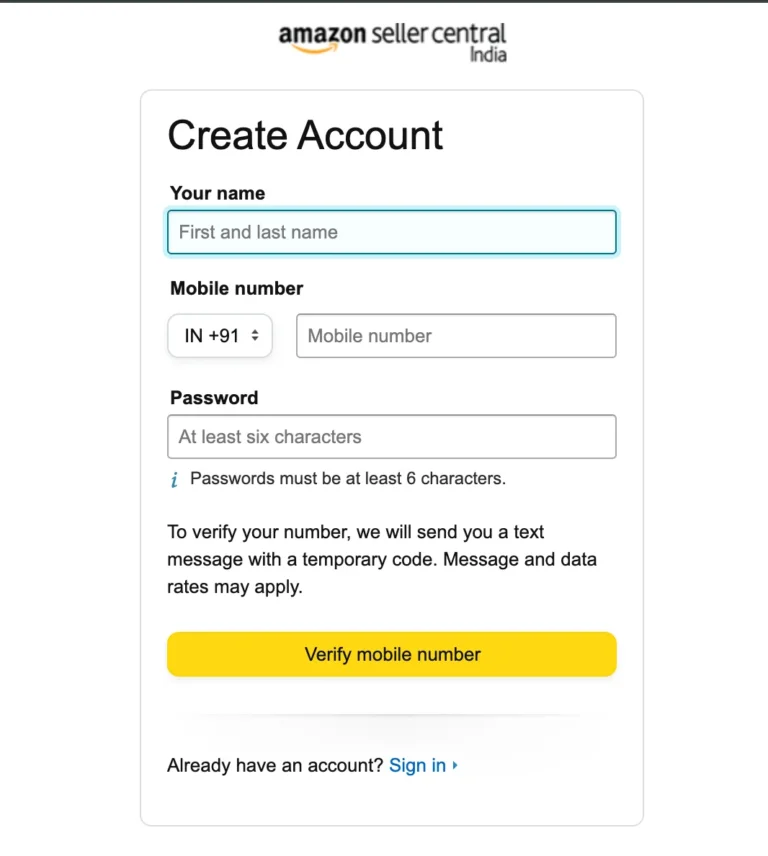
Documents and Information Required to Register:
Email ID: To become a seller you will be required to own a valid mail address. Ensure this is an email address you open frequently because Amazon will notify or communicate with you through email.
Active Mobile Number: You will need this while registering the account and while using the two-factor authentication.
GST Number: In India, you’ll need to register for a Goods and Services Tax (GST) number unless you fall under a GST-exempt category. This is a mandatory requirement for most sellers.
PAN Card Details: If you are registered for GST then you will be required to give your GST details, otherwise, you have to enter your PAN details.
Active Bank Account: Be sure that you have an active bank account to which Amazon can pay you for the products you wish to sell.
Understanding GST:
GST is an indirect tax that was implemented in India in July 2017 The full form of GST is Goods and Services Tax. It makes the taxation structure more streamlined by substituting several taxes like excise duty, VAT and service tax. Any person who sells goods or services that are considered to be taxable must sign up for GST. During the registration on Amazon, sellers are required to enter the GSTIN (Goods and Services Tax Identification Number).

Step-by-Step Guide to Registering as an Amazon Seller:
When you have all the documents and details needed to register, you are now ready to go through the process. Follow these steps:
Step 1: To start the Registration Process
Go to the Amazon Seller Central website. You can start the registration process by clicking here.
Step 2: Create Your Amazon Seller Account
If you already have a customer account on Amazon, you can use the same email and password to sign in. If you don’t, then select the ‘Create your Amazon account’. When you register, you will be required to fill in your name, e-mail address and password for your new account.
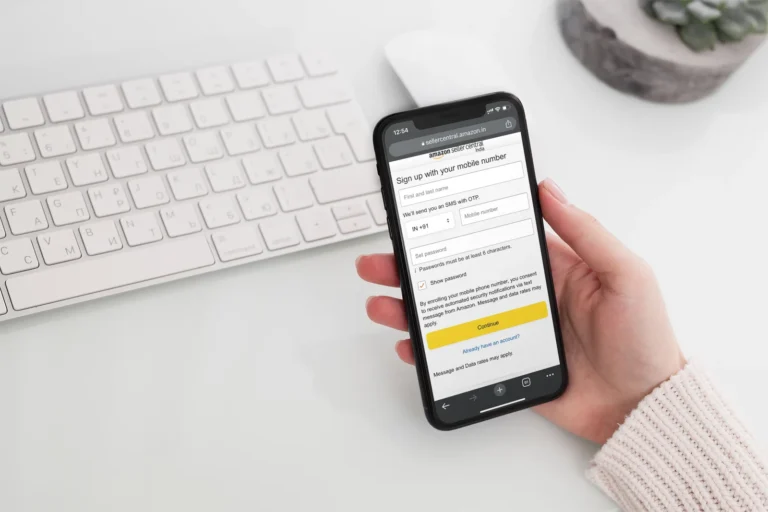
Step 3: Provide Your GST Number
Subsequently, when you are required to register for an account, you will have to provide details with your GST number or, if otherwise, GST exempted, along with your PAN details. After submission of your GST number, validate it and upload your GSTIN document. This is a relevant measure to make sure your business is compliant with Indian tax laws.
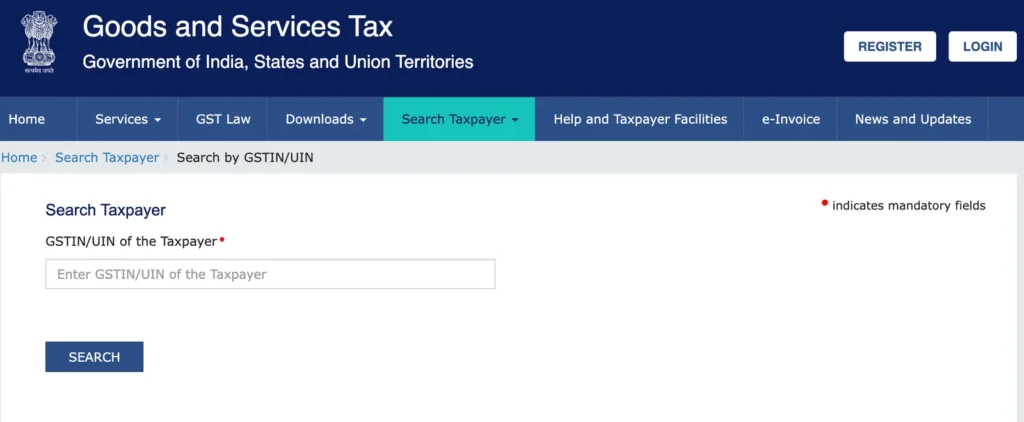
Step 4: Choose a Store Name
After that, you have to come up with the store name for your Amazon business. This name will be used by customers when they are browsing or using your products, therefore, it should suit your business well.
Step 5: Enter the Pickup Address
You will also need to provide the Pickup address, this is the address that Amazon carriers will pick up your products from once you start selling. Make sure to give a correct and visible address in order to prevent delays in the delivery of the orders.
Step 6: Select Your Shipping Method
Amazon has many different shipping options, and these are discussed in further detail below. For now select the one which is most suitable for your type of business model either FBA, Easy Ship or Self Ship.
Step 7: Provide Bank Account Details
Finally, you’ll need to enter the details of your active bank account. This is where Amazon will deposit the money from your sales after deducting the necessary fees.
Step 8: List Your Products
Once your account is set up, it’s time to list your products. It requires specifications such as images, a description and the price of the product that you want to list in your online store. As you will learn in a later section, make sure that your listings are properly optimized to capture the attention of the buyers.

Step 9: Launch Your Store
As soon as you get through all of them you are ready to start your store. When you click the ‘Launch store and start selling’ button, guess what? You’re now running your own store!
What is Seller Central?
Once you submit your application to become an Amazon seller, you will receive approval and be granted access to Amazon Seller Central – an admin interface that controls every aspect of selling on Amazon. This is the back end that will enable you to track the sales, orders, customers’ communications, and other tools essential in business development.
Key Features of Seller Central:
Inventory Management: Add new products, edit existing listings, and monitor your inventory levels to ensure you’re never out of stock.
Sales Reports: Access detailed reports on your sales performance, including information on revenue, product returns, and customer behavior.
Seller Performance: Amazon holds sellers to high standards to ensure a great customer experience. Track key metrics such as your order defect rate (ODR), late shipment rate, and customer feedback to ensure your account stays in good standing.
Support and Help Tickets: If you face any problems, with the help of Seller Central you can connect with Amazon Selling Partner Support. The Case Log is what you can use in order to keep track of your support tickets as well as manage them.
How to List Products on Amazon?
As you already know, creating a seller account is the first step to selling on Amazon; the next step is to offer your products for sale. The product listing is essentially your shop front, and the goal is to make these listings as attractive as possible to the customer to make the sale.
Key Elements of a Great Product Listing:
Product Title: Your title of the product should be described in explicit language and contain keywords. Important information that needs to be included includes the brand, size, color or model of the product depending on the type of product.
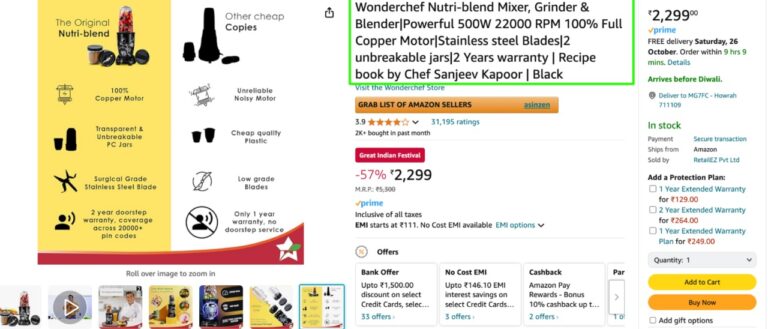
Product Images: Such as it is imperative to have photos of high resolution. The first should give a general appearance of the product; further shots should depict features, advantages, and ways to use the item.
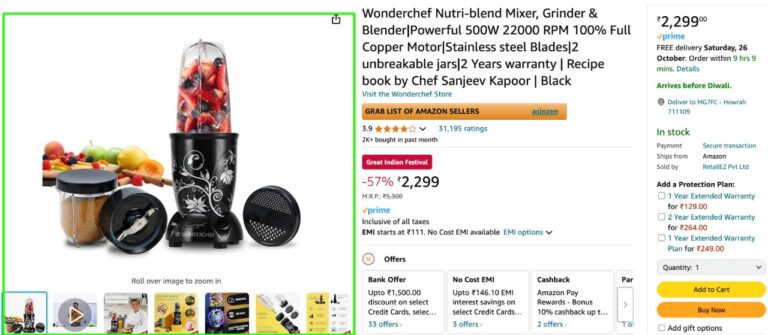
Bullet Points: List out features/benefits in points form as it is easier for one to read than considering writing the whole discourse again. Be brief but cover all the details that any buyer would need to know.

Product Description: Consider writing a simple product description and then doubling its length because customer satisfaction prompts buyers to ask: Why should I buy this? Another thing that can go a long way in making a difference between consumer browsing and consumer buying is an apt description of the product.

Price: Check and make sure that your product is a viable product in the current market. Surprisingly, there are no strict guidelines for the pricing of long-form content, so you should look up market statistics and price your product competitively.
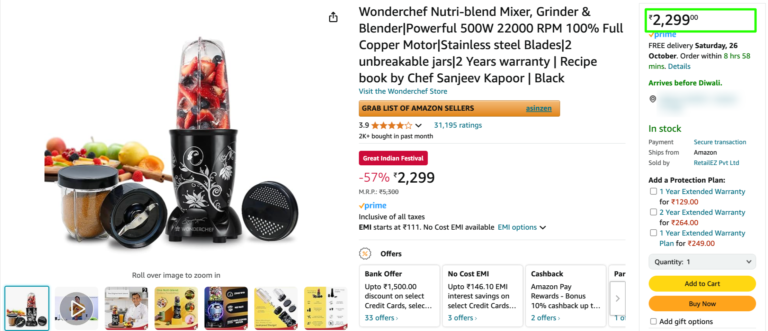
Product Variations: If your product line includes various colors, sizes or models then you should consolidate the various variants under one listing. It also helps the customers to filter through what you offer them easily.
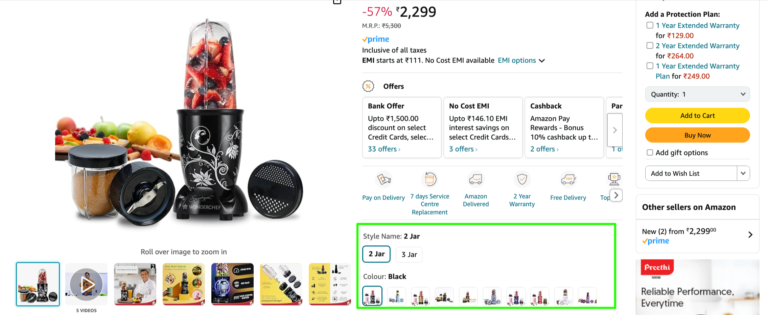
You can list a product on Amazon in two ways:
Match an Existing Product: In case you have found your product on Amazon, you can search for it or use its barcode to match it. This is a fast and easy way to list your products.
Create a New Listing: If your product is new to the Amazon platform the process will involve creating a new listing from the ground up. Upload images, provide product descriptions, and add specifications.
Image Guidelines for Amazon Listings:
Minimum Image Size: Images should be at least 1000×1000 pixels to enable the zoom feature, which helps customers get a closer look at your product.
Preferred Format: Use JPEG (.jpg) or TIFF (.tif) formats, with JPEG being the preferred option.
Image Quality: Make sure your product is well-lit, and the image is clear. The main image should only show the product with a white background and no other objects or distractions.
Fulfillment Options for Amazon Sellers
Order fulfillment is one of the crucial factors of Amazon’s selling business that requires serious consideration when choosing a way of handling orders. Amazon has taken advantage of this and provided several solutions, and the best one depends on your business needs.
1. Fulfillment by Amazon (FBA)
Fulfilment by Amazon (FBA) means that instead of directly shipping and fulfilling your products, you ship your products to an Amazon Fulfilment Centre. Amazon will be responsible for your products’ storage, packaging, and delivery to end consumers. They also handle customer service and returns, giving you more time to focus on growing your business.
Benefits of FBA:
Prime Eligibility: FBA products are automatically eligible for Amazon Prime, meaning your products will get the “Prime” badge and will be more visible to Prime members.
Unlimited Free Delivery: FBA products can be offered with free delivery, which is a major selling point for many customers.
Hassle-Free Logistics: Listing your product on FBA also comes with benefits since Amazon takes care of warehousing, shipping and customer service. Amazon takes care of it all.
Customer Returns: Finally, customers can return their items and get refunds directly from Amazon thus eliminating the burden of having to work with customer complaints.

2. Amazon Easy Ship
Amazon Easy Ship is an Amazon FBA program that allows you to store your products at your preferred location but lets Amazon handle the shipping process. After a customer has placed an order, Amazon will take a product from you and take it to the customer.
Benefits of Easy Ship:
Control Over Inventory: The fact that you store your products in your own warehouse or storage allows you to handle inventory on your own.
Flexible Packaging: You decide the type of packaging material you want for your business making it easier to market your brand.
Amazon-Managed Delivery: This is the customer’s part and Amazon takes care of transporting the product, making sure it gets delivered to the customer as quickly as possible.
3. Self Ship
With Self-Ship, you handle everything—from storing inventory to shipping products to customers. This option gives you complete control over the fulfillment process, but you’ll need to manage shipping and customer service independently.
Benefits of Self-Ship:
Full Control Over Operations: You oversee all aspects of your business, from the packaging of your products to the shipping and even the returns part of the business.
Lower Fees: Another benefit here is that you are handling your own fulfillment, meaning you only pay referral and closing fees to Amazon – this can also lower the overall cost compared to FBA.
Local Shops and Prime Badge: If you have been selling through Local Shops on Amazon and make fast deliveries in your region, you can be approved for the Prime badge to help boost your products’ exposure.
What Happens After You Make Your First Sale?
Congratulations! You’ve made your first sale on Amazon. Now that you’ve successfully launched your store and customers are placing orders, it’s time to focus on the next steps to grow your business.
Payment Process
Once you’ve made a sale, Amazon will process the payment through an Automated Clearing House (ACH) or electronic transfer. Payments are typically received within 5-7 business days after an order is delivered. You can keep track of your payments using the Payment Reports section in Seller Central, which provides a detailed breakdown of your earnings and any fees that have been deducted.
Tracking Performance Metrics
It’s essential to keep track of your performance on Amazon and make necessary changes for your business to thrive. Here are some key metrics Amazon uses to assess your seller performance:
Order Defect Rate (ODR): This measures the percentage of orders that have had problems that may range from product quality, delayed shipment or customer complaints. This number should be kept to the lowest possible in order not to incur any penalty or suspension of the account.
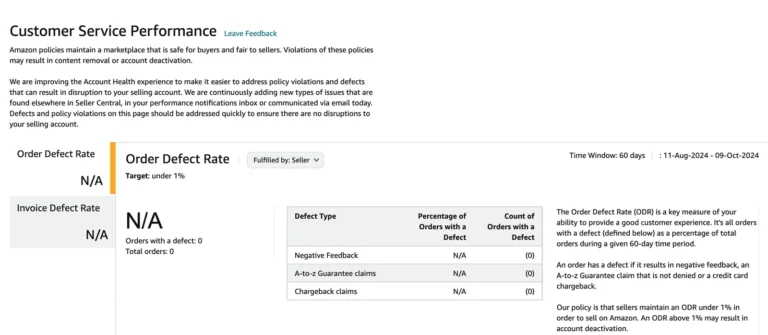
Late Shipment Rate: Customers expect an organisation to deliver its products on time. Freight delays are detrimental to your account health especially if you are constantly behind schedule.
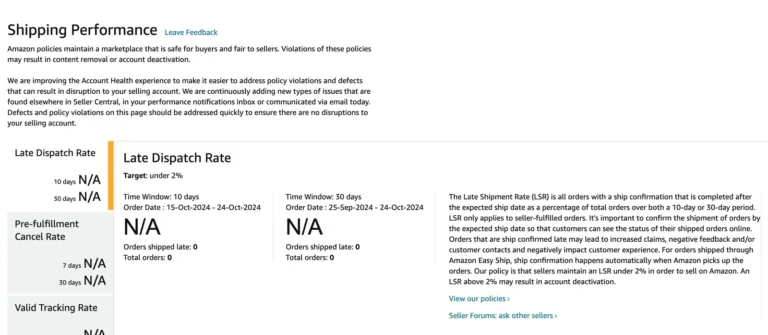
- Customer Feedback and Reviews: Encourage customers to leave reviews, but make sure to follow Amazon’s guidelines on requesting feedback to avoid violations.

Maintaining Account Health: Your Account Health Dashboard in Seller Central is where all key performance indicators are displayed at a glance. You should review it often so that you do not violate any of Amazon’s policies that may lead to suspension of your account.
Best Practices for Selling on Amazon
Now that you’ve got the basics down, it’s time to focus on strategies that will help you become a successful seller on Amazon.
1. Give the Best Customer Service
Customer relations are crucial in customer retention and ensuring that the seller maintains a healthy customer reputation. Communicate with customers in a short time, handle the return of goods politely, and solve complaints within the shortest time possible. The happy customers give positive output regarding the product in the form of reviews and will go for the next purchase.
2. Optimize Your Listings
Make sure your product listings are optimized for both customers and search engines. This means using relevant keywords in your titles and descriptions, updating images regularly, and ensuring that all product details are accurate. Optimized listings not only help your products appear in search results but also improve conversion rates.
3. Join Fulfillment by Amazon (FBA)
If you haven’t already, consider joining FBA to streamline your fulfillment process. FBA makes your products eligible for Prime, offers free and fast delivery to customers, and relieves you of the logistical burden of storing, packing, and shipping products.
4. Leverage Amazon Advertising
Optimize your campaign with the help of available advertising platforms like Sponsored Products and Sponsored Brands to gain more exposure. Sponsored products become visible on the Amazon platform, allowing you to attract new consumers and increase sales volume during important shopping periods.
5. Participate in Sale Events
Amazon regularly hosts sale events like the Great Indian Festival and Prime Day. Being involved in these events by presenting reduced rates, multibuy offers, or promotions can have an astronomical impact on your sales.
6. Use the Automate Pricing Tool
Amazon’s Automate Pricing tool helps you stay competitive by automatically adjusting your prices based on market conditions. If you set rules for price changes, you can improve your chances of winning the Buy Box and sell more products.
7. Listen to Your Customers
Customer feedback is invaluable for improving your products and services. Keep an eye on the feedback section in Seller Central to monitor product reviews and use the Voice of the Customer tool to find out about any problems or shortcomings regarding the product.
Conclusion:
Being an Amazon seller opens up an array of possibilities to gain access to one of the largest online markets. Following this step-by-step guide and conducting thorough market analysis and then implementing a strategy that is effective to establish an efficient firm through Amazon. Keep yourself up to date with the most recent trends, be aware of the changing preferences of customers and constantly strive for top-quality customer service. With perseverance and dedication you will be able to maximise the potential of the selling process through Amazon.
Additional Reading
For more insights into optimizing your Amazon business, check out:

